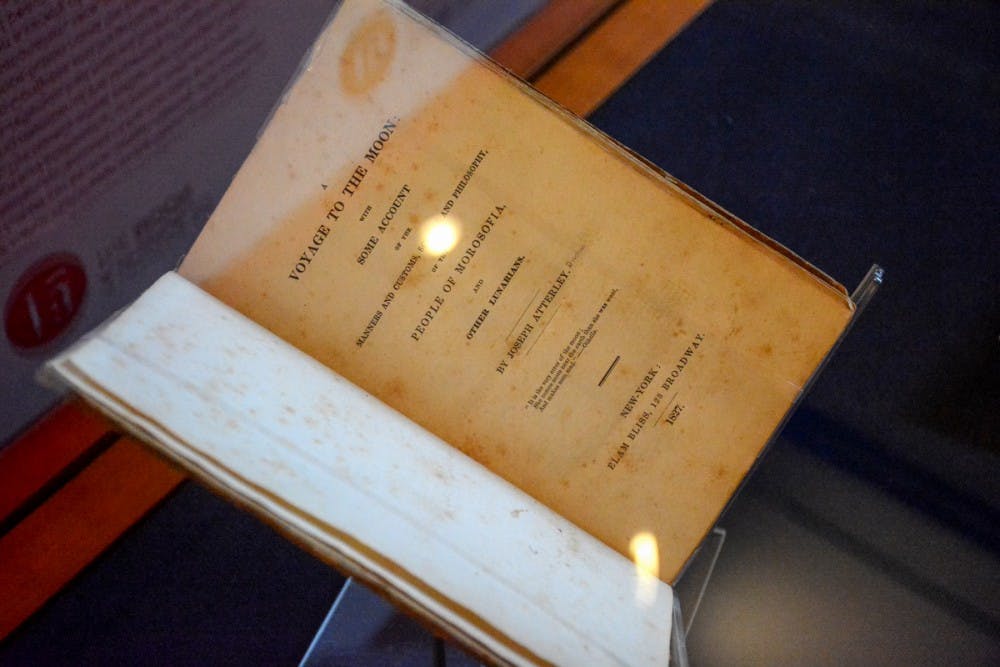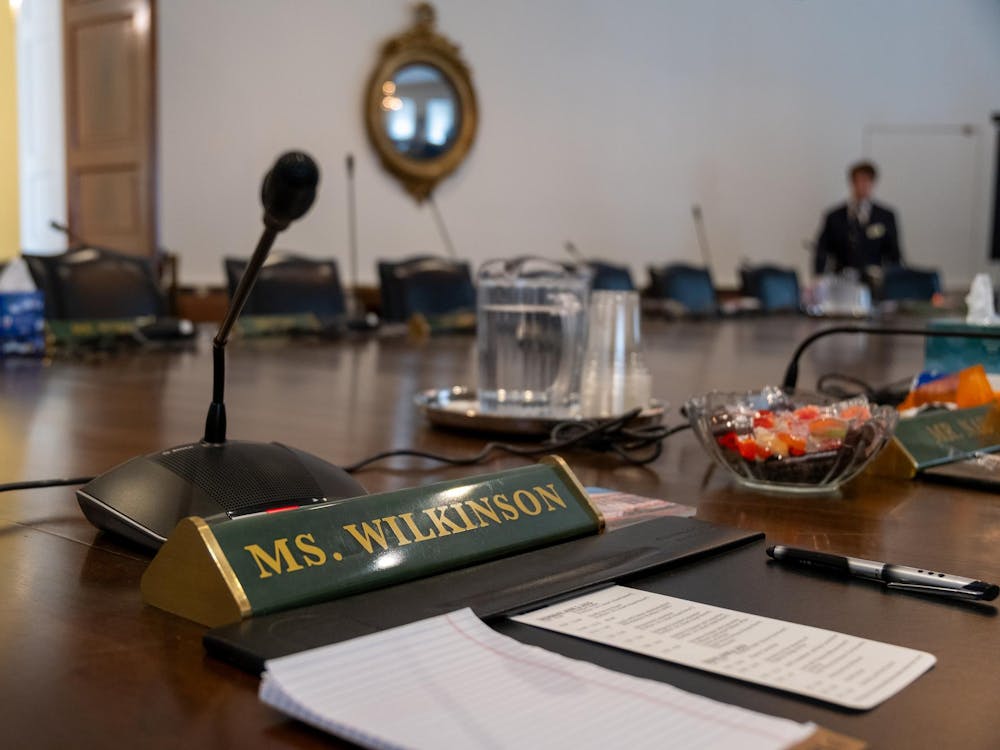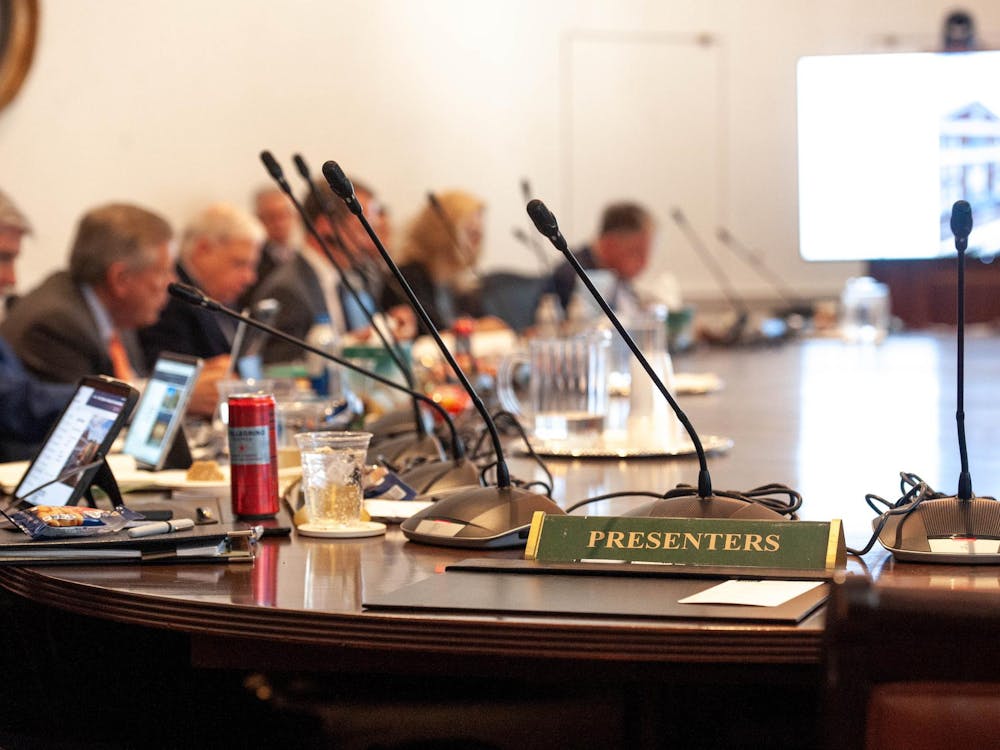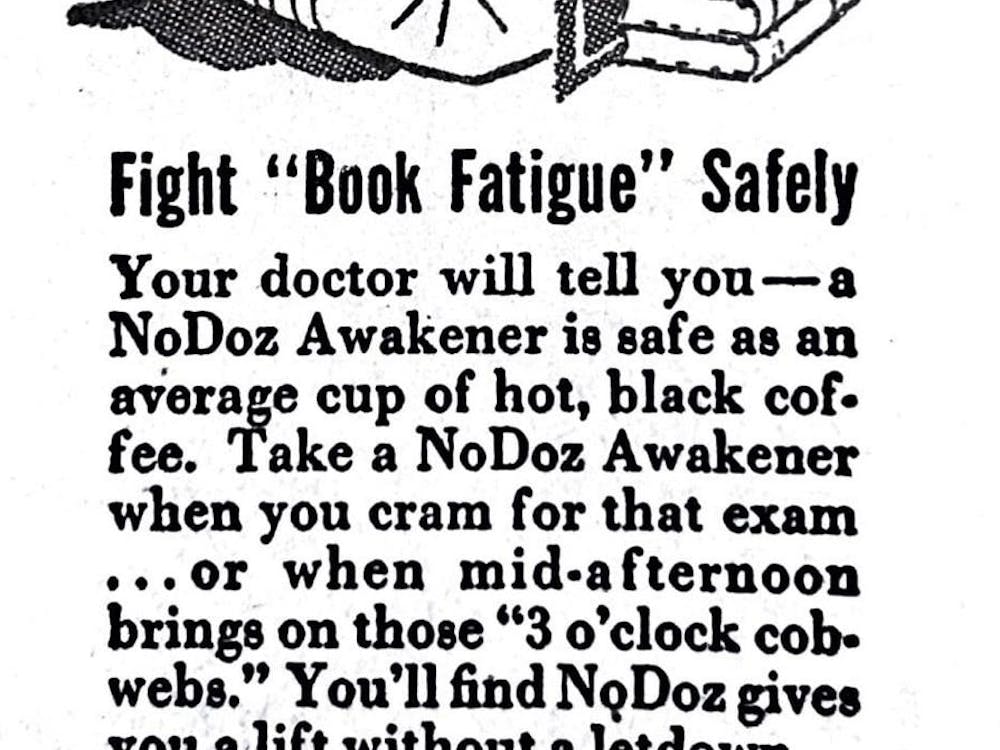“University in 100 Objects,” a talk presented Friday afternoon by author and Encyclopedia Virginia editor Brendan Wolfe, highlighted the University’s struggle to define its identity as expressed through various objects from the University’s history. The objects appear in Wolfe’s recent book, “Mr. Jefferson’s Telescope.”
The talk was given as part of the University’s Bicentennial weekend events and held at the Special Collections Library. It correlated with the “University of Virginia in 100 Objects” exhibit, which began Aug. 24 and will run until June 22, 2018.
The exhibit itself is directly linked to Wolfe’s book and can be viewed in the exhibition galleries at the Harrison Institute and the Special Collections Library, as well as multiple other locations around the University.
Wolfe began by speaking about how the objects may be singular and seemingly unrelated. However, as individuals explore their stories, they piece together the collective narrative for themselves and develop their own unique perspective on the history.
“The way I’m going to describe it today is sort of like choose your own adventure,” Wolfe said in an interview with The Cavalier Daily. “You can put these together in all kinds of different ways and you can get out of it all kinds of different meanings.”
Wolfe initially spoke on the discrepancy between Thomas Jefferson’s intentions of creating an academic institution for the elite class and the University’s struggle to be an elite institution in its own right.
“U.Va was always an institution of the elite, but struggled to live up to being an elite institution for a long time,” Wolfe said. “There’s always been tension being of the elite and being an elite school.”
Wolfe said certain changes made by the University in the 20th century led others to take it more seriously as an elite university, including greater investment in facilities, research and seeking out a more diverse student body.
This led to Wolfe’s introduction of the Bice Device, a sound related device created by Raymond C. Bice, Jr. Bice was a psychology professor who eventually became the director of admissions under former University President Colgate Darden.
Wolfe’s presentation of the Bice Device highlighted its unique relations to science and Bice’s creation of the University’s first computer out of parts of pinball machines, but also Bice’s separate efforts to expand diversity as the Director of Admissions. Under Darden, who led efforts to democratize the University, Bice worked to grow the student body and bring more public school students to Grounds, which contradicted the original elitist goals.
“In certain respects, that’s not at all what U.Va was supposed to be. It’s interesting how we can reinvent ourselves, while at the same exact moment, deny that that’s exactly what we’re doing,” Wolfe said.
Wolfe reflected on one of the most unique objects in the collection — a strand of Jefferson’s hair, taken directly from his corpse by his personal secretary. Wolfe said this object — along with the University’s Jeffersonian architecture, quotations and ideals — helps the University to continue to partake in the spirit of Jefferson.
“We partake of Jefferson in the faith that this Jefferson-ness, for lack of a better word, will transubstantiate — it will transform in something bigger than itself,” he said.
Wolfe said although the multifaceted history of the University does not begin or end merely with an idealistic Jeffersonian perspective, the University still struggles with the narrative today.
“I feel like we’re in an era of uncertainty of our identity at U.Va,” Wolfe said.
Wolfe told The Cavalier Daily that he would select the Jefferson statue on the north side of the Rotunda as an object to represent this year in the University’s history. He noted the students who counter-protested around the statue against the white supremacist torchlit march through Grounds Aug. 11 as well as the students who shrouded the statue last month.
“I think that that statue in those two moments sort of captures what’s really complicated about the University and its sense of itself right now,” Wolfe said.
Exhibition curator Molly Schwartzburg spoke with The Cavalier Daily about the physical exhibition and how objects are thematically arranged to create a thought-provoking and serious yet pleasurable experience.
“Instead of going with the numerical order that’s in the book, I arranged them thematically, so clusters of objects that tell certain kinds of stories about the University. So ways of juxtaposing artifacts from different historical moments to tell you another set of stories beyond the set of stories that’s told in the chronological narrative of the book,” Schwartzburg said.
Schwartzburg’s favorite feedback from the exhibition came from a University student, who visited on the second day of the exhibit.
“‘Powerful exhibit. Every U.Va student should stop by,’” Schwartzburg said, quoting the student’s guestbook response.







